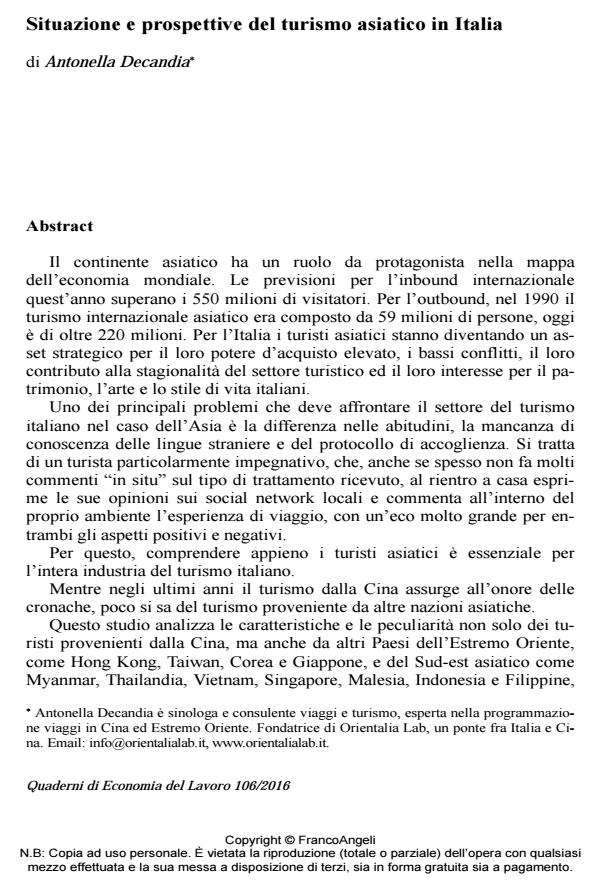Situazione e prospettive del turismo asiatico in Italia
Journal title QUADERNI DI ECONOMIA DEL LAVORO
Author/s Antonella Decandia
Publishing Year 2017 Issue 2016/106
Language Italian Pages 42 P. 181-222 File size 311 KB
DOI 10.3280/QUA2016-106010
DOI is like a bar code for intellectual property: to have more infomation
click here
Below, you can see the article first page
If you want to buy this article in PDF format, you can do it, following the instructions to buy download credits

FrancoAngeli is member of Publishers International Linking Association, Inc (PILA), a not-for-profit association which run the CrossRef service enabling links to and from online scholarly content.
The Asian continent has a starring role in the world economic map. Forecasts for international inbound year exceed the 550 million visitors. For outbound, in 1990 the Asian international tourism was made up of 59 million people, now has more than 220 million. For Italy Asian tourists are becoming a strategic asset for their high purchasing power, low conflict, their contribution to the seasonal nature of the tourism industry and their interest in heritage, art and Italian lifestyle. One of the main problems facing the sector of Italian tourism in the case of Asia is the difference in customs, the lack of knowledge of foreign languages and the hosting protocol. It is a particularly demanding tourist, who, though often does not make many comments "in situ" on the type of treatment received, returning home expresses his point of view on local social networks and comments his travel experience inside his environment, with a very great echo for both the positive and negative aspects. For this, fully understand the Asian tourists is vital for the whole industry of Italian tourism. While in recent years, tourism from China rises in the news, little is known of tourism from other Asian nations. This study analyzes the characteristics and peculiarities of the tourists not only from China but also from other countries of the Far East, such as Hong Kong, Taiwan, Korea and Japan, and South-East Asia such as Myanmar, Thailand, Vietnam, Singapore, Malaysia, Indonesia and the Philippines, with advice on how to adapt the touristic offer for each of these guests with their similarities and differences.
Antonella Decandia, Situazione e prospettive del turismo asiatico in Italia in "QUADERNI DI ECONOMIA DEL LAVORO" 106/2016, pp 181-222, DOI: 10.3280/QUA2016-106010